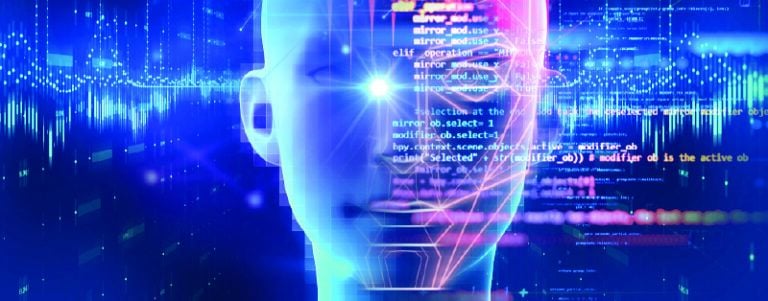A Detailed Guide on the Meaning, Importance, and Future of Neural Networks

Neural networks are part of deep learning, which comes under artificial intelligence. They (neural networks) are a set of algorithms that are modeled after the human brain. They are also called artificial neural networks (ANN).
These networks have revolutionized the field of artificial intelligence in the past decade. They have shown remarkable success in image recognition, self-driving cars, and medical diagnosis.
Here, we will explore the meaning, application, and future of neural networks. But before that, let’s understand common terms associated with these networks.
Common Terms Related to Neural Networks
-
Neurons
Neurons are the core processing unit of the neural network. Every neural network has interconnected neurons that receive input and product output. They resemble human brain neurons.
-
Layers
A neural network consists of three layers- the input layer, hidden layer, and output layer. The input layer is the layer where you feed the information. The hidden layer is where the computation or mathematical calculations happen. The output layer displays the output.
-
Weights and Bias
Weights refer to the strengths in the connection of neurons. Weights are generally initialized as random values. But gets adjusted during the training process (done to reduce errors in neural networks).
Besides weights, bias is also present in every neuron. Bias is the numeric value or the constant in the hidden layer. They are generally added to each input to determine if the output is above the threshold value. If the output exceeds a specified threshold value, the node gets activated and transmits the information to the outer layer.
It is important to remember that weight and bias are learning parameters of machine learning (ML) models. They are modified and used for training neural networks to perform complex tasks.
What Are Neural Networks?
 A neural network is a program designed to mimic the functionality of the human brain. They have connected nodes that work and resemble the original neurons of the human brain. Every node consists of inputs, weights, and a bias. These nodes receive, process, and send data.
A neural network is a program designed to mimic the functionality of the human brain. They have connected nodes that work and resemble the original neurons of the human brain. Every node consists of inputs, weights, and a bias. These nodes receive, process, and send data.
Every node consists of three layers- input, output, and hidden. A weight connects every node, and each node has a bias value or constant. Nodes get activated only if the sum of input and bias value is above a pre-decided threshold value. Activated nodes can only produce an output.
It’s important to understand that neural can work without any human intervention. They rely on training to learn and improve their accuracy over time. Once they are fine-tuned they are powerful artificial intelligence tools that can be used in self-driving cars or image recognition software.
Here’s an example that will help you understand the neural network:
Image recognition software uses neural networks to identify images. But the fascinating thing is that neural have no knowledge about the features or other details of the images they are identifying. They analyze images on the basis of manual labels- ‘image’ or ‘no image’.
Why Are Neural Networks Important?
Neural networks are a robust tool that businesses use to solve complex business problems. Companies use this form of network to identify patterns and predict rare events like fraud detection.
These networks are capable of developing a relationship between non-linear and complex inputs and outputs. This makes them perfect for projects that require data-based decisions to achieve success. They are also used in areas such as:
- Quality control
- Voice recognition or natural language processing
- Healthcare for disease diagnosis
- Targeted marketing
Application of Neural Networks in Today’s World
Neural networks are changing the way people and organizations interact with machines. That’s why different industries are using these networks for excelling in their field.
1. Facial Recognition
You can train neural to recognize and classify objects into images. Additionally, you can feed them a large number of pictures and optimize them for accurate facial recognition. Thus, making them useful for tasks such as facial recognition.
2. Stock Market Prediction
It is nearly impossible to predict changes in the stock market. But, you can use it to make successful real-time stock predictions. Use multilayer perceptron or MLP (a type of neural network) to make stock market predictions. MLP has layers of nodes that analyze a stock’s previous performance and annual returns to make future predictions.
3. Predictive Analytics
You can use these networks to analyze large amounts of data and make predictions based on it. Thus, making neural perfect for applications like financial forecasting, marketing analytics, and supply chain optimization.
4. Social Media
You can use neural networks to study the behaviors of social media users. Use Multilayer Perceptron artificial neural network to extract data from social media networks and draw insights about customer preferences.
5. Healthcare
In healthcare, you can use neural networks like convolutional neural networks (CNNs) and recurrent neural networks (RNNs). CNNs can be used to examine and assess data retrieved from X-rays, CT scans, and ultrasounds. Meanwhile, RNNs can be employed in voice recognition systems to keep track of patient data.
Also Read: 10 Best Data Science Programming Languages of 2023 That Every Data Scientist Must Be Aware
Future of Neural Networks
You can see the usage of neural networks in applications such as self-driving vehicles and speech recognition software.
1# Improved Performance
A decade ago, no one would have imagined neural networks to perform complex tasks like the ones they are doing now. This shows that the performance of neural has been improving. That could be because of recent advancements in algorithms, architectures, and optimization techniques. This also makes it clear that in the future, you can expect big improvements in neural networks’ performance.
the performance of neural has been improving. That could be because of recent advancements in algorithms, architectures, and optimization techniques. This also makes it clear that in the future, you can expect big improvements in neural networks’ performance.
2# Easier to Explain
The biggest disadvantage of these networks is that it is hard to understand how the computer program arrived at the output. As researchers delve deeper into AI and ML, there are chances that you might understand how a neural network derives an output.
3# Hybrid Architecture
In the future, we can see hybrid architecture that combines different neural networks and deep learning techniques to build an integrated computer program. These hybrid architectures might also address some of the limitations related to neural and improve overall performance.
4# Transfer Learning
Transfer learning is the process of re-using pre-trained models on a new problem. It is a popular trend in deep learning because it can train neural networks with little data. The rapid use of neural in transfer learning models makes it clear that the trend is here to stay. Therefore, in the future, you can expect more research-focused transfer learning models.
By now, you must be aware that these networks are a type of ML algorithm designed to recognize patterns in data and make predictions. Also, you must have understood that the future of neural is very promising. Because they are being used in many applications, from computer vision and NLP to robotics and healthcare.
Online Courses From Emeritus Can Boost Your Career In Artificial Intelligence
Enrich your career in artificial intelligence. Take a certificate course in artificial intelligence to get a comprehensive understanding of key artificial intelligence algorithms and how to use them to make informed decisions and gain a competitive advantage.
Emeritus offers artificial intelligence certificate courses designed for fresh graduates and experienced professionals. Moreover, these programs are offered in association with renowned institutes like IIM and IIT. Join the courses to accelerate your career.
Frequently Asked Questions
1. What Are the Common Types of Neural Networks?
There are two main types of neural networks that you must be aware of, they are:
- Convolutional neural networks (CNNs) are used for image classification and object detection. You can use it in areas like natural language processing and forecasting. It contains five layers- input, convolution, pooling, fully connected, and output. Each layer has its purpose and role in transmitting input to the desired output.
- Recurrent neural networks (RNNs) are a type of neural network where the output from the previous step is the input of the current step. In RNN, the inputs and outputs are not dependent on each other.
2. Who Uses Neural Networks?
Neural networks are used in many industries and lines of business. Here’s a list of industries using such networks:
- The manufacturing industry uses such networks for optimizing the supply chain and forecasting demands
- The banking industry also uses it to detect fraud and automate different banking services
- Public sector companies use neutral networks to support smart cities and develop intelligent security systems
- The retail and consumer goods industry uses these networks to enhance customer engagement and introduce chatbots to solve customer queries
3. What Are the Benefits and Challenges of Neural Networks?
Here are some of its benefits:
- The parallel nature of neural keeps the machines running even after an element of the neural network fails.
- Neural networks can learn faster than other deep learning techniques. Moreover, they don’t need to be reprogrammed.
- It is versatile and can be used in a wide range of applications across different industries.
Here are a few challenges that need attention:
- Neural requires comprehensive training to attain accuracy
- It is hard to determine how neural come to a conclusion
- Neural takes up a high processing time for large-scale projects






